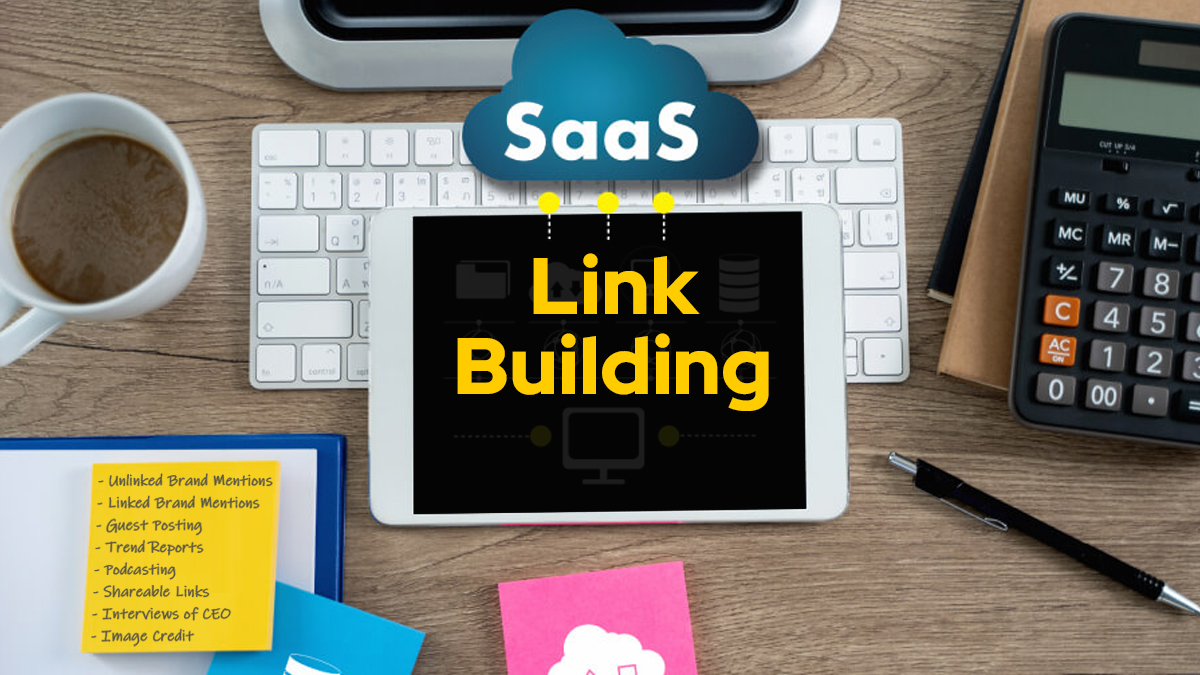For numerous online businesses, particularly fledgling ones, clinching a spot on the coveted first page of search results is the dream. Ascending to this prominent position can significantly amplify brand visibility and fuel business growth. A top-ten placement on a Google search is a testament to your brand’s credibility and superiority over competitors. So, what’s the magic formula to ascend the ranks?
A robust SEO strategy is your answer. At the heart of this strategy, propelling a website’s popularity on search engines is link building. This technique is pivotal in ensuring your website’s visibility in search engine results.
For Software-as-a-Service companies, a rich tapestry of backlinks can be transformative. Here, we’ve collated a suite of SaaS link building strategies that SEO firms swear by, along with tactics to accrue do-follow links, inbound links, and boost traffic to your website’s cornerstone pages.
What Does Link Building Mean for SaaS?
For SaaS entities, link building is about acquiring authoritative and pertinent links directed at their website. The overarching aim is to augment organic traffic and elevate the website’s standing in search results. Potential strategies span from outreach emails to unfamiliar recipients, participating in online events, to syndicating content on third-party platforms.
Any leading SaaS SEO company will strongly recommend integrating SaaS link building into your strategy to improve search engine rankings and drive organic traffic. It’s a proven method for enhancing online visibility and authority.
Is Link Building Necessary in 2023?
Given the relentless updates to search algorithms, which seemingly diminish the influence of link building, questioning its continued relevance is logical. In the 2023 landscape, opinions on link building’s importance are polarized. Some companies vouch for its indispensability, while others dismiss it as redundant.
The truth lies somewhere in between. Google’s landmark algorithmic introductions, such as Panda, were designed to penalize manipulative link practices. This included tactics like unnatural link exchanges, purchasing links, or leveraging once-popular bookmarking sites.
Such subversive strategies led to inferior content undeservedly dominating the top spots in search results, eclipsing genuinely valuable content. However, these algorithmic shifts haven’t diminished the value of authentic, high-quality links from credible sources. If anything, the emphasis on quality over quantity has intensified. In 2023, any underhanded link-building practices will be promptly flagged by Google’s algorithms, rendering them ineffective. On the flip side, not engaging in these will neither benefit nor harm your website. If Google’s algorithms detect any anomalous link activity, a manual review might be triggered.
Strategies for SaaS Link Building
Unlinked Brand Mentions
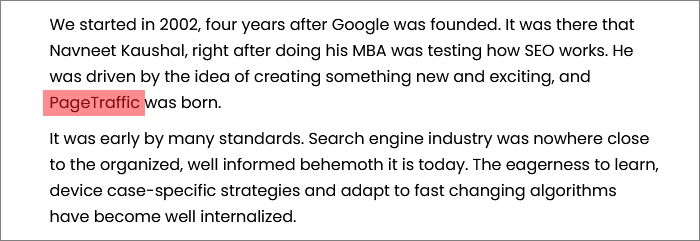
Unlinked brand mentions scattered across the web offer excellent link-building opportunities. The aim here is to identify instances where your brand is referenced without an associated link. By setting up alerts on platforms like Google News, you can routinely identify such mentions. Upon spotting them, reach out to the content creators, either via email or social media, and request the addition of a link to your site.
Linked Brand Mentions
This method is about refining existing links. Reach out to websites already linking to your homepage and suggest they redirect the link to a more contextually relevant page. Given that your content creation is an ongoing process, newer, more comprehensive pieces might emerge. If a high-authority site is linking to older content, it could be more beneficial for them to redirect to your latest, more informative piece.
Guest Posting
Guest posting remains a cornerstone of SaaS SEO-driven link-building strategies, known for its consistency in delivering results. The process involves offering high-quality content to high-authority websites, ideally within your niche. In exchange for this premium content, they accommodate a link back to a designated page on your website.
This not only boosts the topic authority but also drives organic traffic. While producing quality content might seem labor-intensive, the returns in terms of improved domain authority and increased organic traffic are significant.
Establishing a symbiotic relationship with website owners who prioritize content quality can be rewarding. They get to uphold your backlink strategy and, in return, receive top-notch guest posts from you or your team. That said, link prospecting can be a meticulous process, often entailing extensive communication. Consequently, many SaaS companies are pivoting towards external SEO services that already maintain a network of guest bloggers pertinent to their industry.
Trend Reports

Crafting high-quality content, such as trend reports, can be a cost-effective way to bolster link building. Venngage has significantly expanded its backlink portfolio for a specific page by emphasizing SEO in its content creation. Their strategy? They undertook comprehensive research on 2023 design trends and then produced a comprehensive, barrier-rich article spanning over 13,000 words. They amplified their SaaS content’s value tenfold by:
- Employing their product to design bespoke, top-tier infographics.
- Producing a premium YouTube video aligned with the content.
Annually updating the same URL with current design trends has further boosted its linked domains and search engine ranking. The referral traffic to this page alone is a testament to its efficacy.
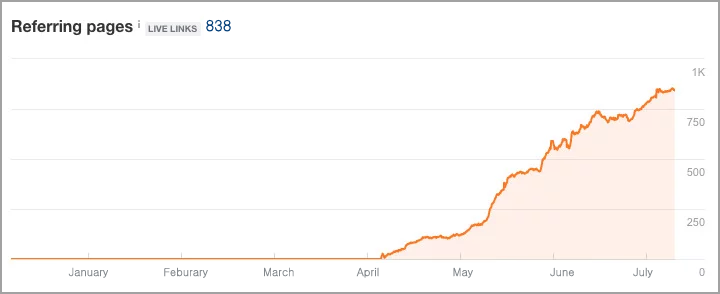
Podcasting
Podcasts may seem unrelated to SEO, but they can be a powerful tool for building backlinks and enhancing brand visibility within target communities. It’s analogous to guest posting. Most podcasts are accompanied by dedicated websites. When you feature on a podcast, they’ll likely post it on their site and embed links to referenced websites – yours included.
For instance, after Hubspot’s VP of Growth guested on the renowned “Everyone Hates Marketers” podcast, they secured a link back to their own podcast series. Podcasting can be a more time-efficient alternative to guest posting; it only requires preparation and a 30-45 minute discussion on a familiar topic.
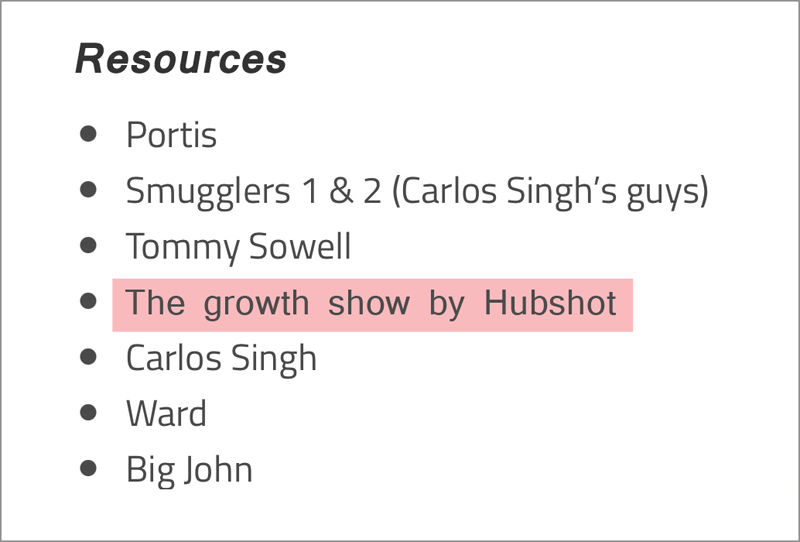
Embedding Products
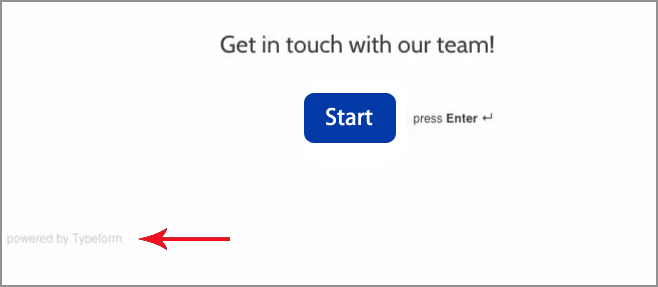
Product embed links are created when customers incorporate aspects of your product into their websites. Take Typeform: when users embedded their contact forms, a backlink was also generated to Typeform’s form creator page, boosting its ranking. To utilize this strategy, allow your product to be embeddable, encourage users to feature it on their sites, and add a “Powered By” link pointing to a relevant webpage. This tactic is also termed “widget link building.”
Also Read: Everything You Need to Know About B2B SaaS SEO
Shareable Links
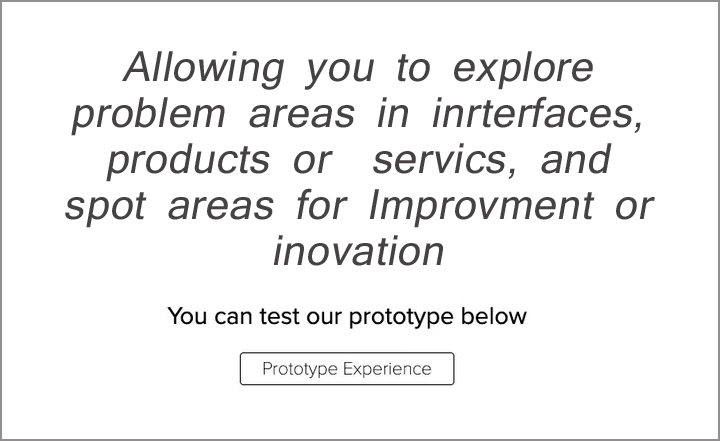
Here’s a fascinating insight: 30% of Invision’s backlinks direct to their project’s subdomain, where client prototypes are showcased. This strategy has garnered them top-tier links from authority sites such as Adobe, GitLab, Eventbrite, Dribble, Zendesk, SurveyMonkey, Hubspot, and more. Their secret? They motivate users to publish Invision projects on the web.
As a result, users end up generating 30% of their links, enhancing Invision’s domain authority. By equipping users with the tools to produce compelling content, your link-building initiatives are poised to benefit. For SaaS platforms focused on analytics, making product reports easily shareable can be a game-changer.
Roundups
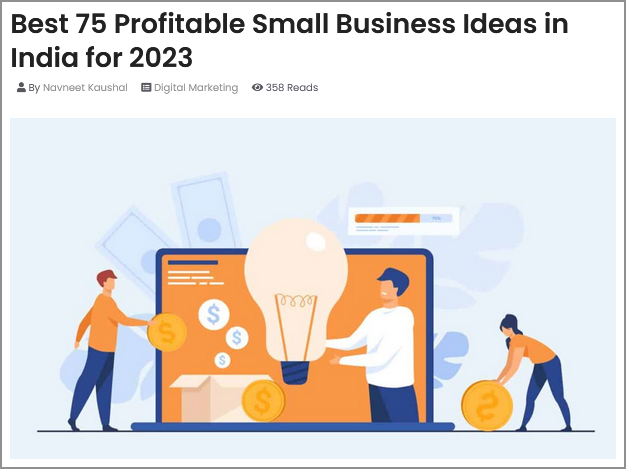
Many SaaS companies are leveraging link-building strategies like roundups. These roundups, also known as resource pages, are collections of premier tools or resources around a specific topic, such as “top marketing tools” or “best 10 image optimizers.” Consider how many roundups in your niche you could potentially reach out to.
Broken links
The broken link-building strategy involves identifying a broken link on a website within your niche and proposing a replacement link that directs to your site. Occasionally, you might spot opportunities with broken links, even on nofollow links. Such links become broken when a page, initially linked to, gets deleted. If you encounter this during your link prospecting, you can suggest to the site owner a replacement link pointing to your content.
Also Read: SaaS SEO – Actionable Guide to Grow Your SaaS Business with SEO
This tactic is effective not just because search engines favor it, but also because it aids your link-building efforts. However, creating content from scratch for this purpose can be time-consuming.
Interviews of CEO

Link-building via interviews parallels the approach used with podcasts. Begin by identifying websites that have previously interviewed SaaS company founders or other industry experts. Check if they’d be interested in interviewing your CEO. It doesn’t always need to be live; they can forward the questions, and you can send back the answers to be published in an interview-style blog post.
This often results in a link back to your website. Consider how many sites might be keen on interviewing your CEO or other industry stalwarts. By pitching or fostering relationships with website owners in your niche, you can share your expertise and, in return, secure valuable backlinks.
Infographics

Infographics are potent link-building assets. The proposition is straightforward: offer valuable visual content in exchange for quality links. It’s crucial to craft meaningful and unique infographics tailored to the content of their website, rather than generic ones found commonly online. Are there topic-specific articles that could be enhanced with your infographics, crediting you as the source?
Image Credit
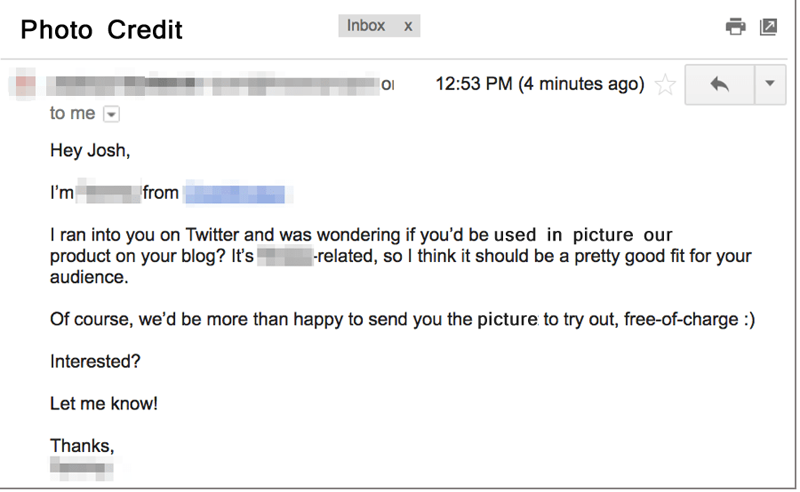
Securing a link by receiving credit for images from your website used by others is a nifty SaaS link-building approach. Consider how many individuals or entities should be attributing your site when utilizing images from it. This technique can be an effortless way to build links, not only to landing pages but also to other prominent image-containing pages on your website.
Product Reviews
Securing product reviews can be a triple win for SaaS companies: they provide backlinks, offer social proof, and can potentially bring in new customers. Furthermore, many product reviews are naturally rich in target keywords. One tactic is to offer content creators in your sector free access to your product for three months, in exchange for them writing a review on their site within a fortnight of accessing your tool.
The allure of a free trial can be compelling, and if they find value, they might become paying customers. This approach streamlines the link-building process, offering a more efficient alternative to traditional guest blogging.
Integration Partners
Integrations play a pivotal role in the GTM strategies of numerous SaaS firms, aiming to amplify their MRR. Besides their primary function, they can serve as potent backlink sources. When partnering for integrations:
- Ensure your partner has linked to your integration directory listing.
- Advocate for the use of your target keyword as anchor text and encourage them to craft a blog post linking back to a pivotal page on your website.
Revisiting past integration partnerships can provide a significant uplift to your link-building endeavors.
Ranking Reports
One of the more ambitious yet high-reward strategies involves crafting ranking reports. These reports, highlighting industry standouts, can nudge brands to link back out of pride. Nathan Latka skillfully leveraged this tactic to bolster links to his SaaS database, GetLatka. He spotlighted rapidly growing SaaS firms and prompted them to showcase these accolades on their sites.
By doing so, he elevated both his link profile and brand visibility. Consider what distinctive ranking reports you can produce that would entice brands to showcase.
Badges
Badges remain an underutilized link-building asset for many SaaS companies. Offering badges to users can rapidly increase referring domains to your site. A prime example is G2, which periodically ranks software entities. Coveted by top brands, the G2 badge serves as a trust signal, aiming to elevate conversions.
Moreover, G2’s Customer Success Managers actively promote badge integration on their clients’ sites, emphasizing the inclusion of links. Mixpanel provides another illustration: they reward users for displaying their badge and penalize those who remove it. Contemplate whether your SaaS entity can develop enticing badges. How might your customer success team persuade clients to showcase them?
Free Tools

Offering free tools is a potent strategy to attract your Ideal Customer Profile (ICP) to your SaaS site and leverage product-led growth to stimulate product signups. By curating resource pages stocked with genuinely valuable tools for your users, you are more likely to accrue links directed towards these tools. However, promoting your free tool within the appropriate communities and garnering links necessitates effort.
For example, Invision devised a free design plugin for Photoshop and Sketch. While they garnered leads translating into product signups, they also amassed 994 links pointing back to their site. How are you conceptualizing and promoting free SaaS marketing tools?

Help A Reporter Out (HARO)
HARO stands as a dual boon for SaaS businesses, fostering both link-building and favorable PR. HARO connects journalists with knowledgeable sources for their impending articles. In reciprocation for your insights, you are likely to earn a link in the author section of their piece. Regardless of the link type – be it nofollow or do-follow – featuring on a reputable platform ushers in organic traffic.
For instance, some SaaS entities have clinched links from esteemed platforms like Forbes and Inc.com. HARO’s perks? It’s complimentary, regularly presents valuable link opportunities, and its premium version even allows keyword-focused alerts to hone in on pertinent topics.
Testimonials

Crafting testimonials is a straightforward avenue to procure backlinks. Even if the majority of platforms offer nofollow links, the effort invested pays dividends. Reflect on the array of products you’ve previously utilized, reach out to those providers, and propose a concise testimonial in exchange for a link to your site’s homepage. For example, penning a succinct review for Fomo’s software not only garners you a link but, given Fomo’s traction, that link packs a punch.

Conferences
Engaging in conferences, both as a speaker and sponsor, augments your thought leadership stature and garners quality links. For instance, Invision’s participation in Oreilly’s Design Conference led to a backlink from their speaker bio. The realm of online conferences, too, presents opportunities.
Companies like Drift have reaped links from virtual summits such as the Product Led Summit. When you partake in these events, ensure the hosting event page reciprocates with a link.
Q&A Websites
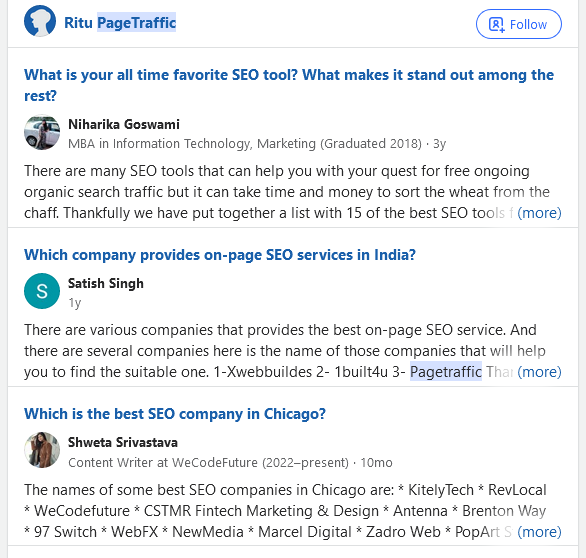
Address prospective client queries on Q&A platforms like Yahoo Answers and Quora. An illustrative case is Smartlook, which acquired a link by aptly answering the question, “Does anyone know an alternative to ClickTale?” This intervention not only cultivated a backlink but also drew traffic and signups from an audience keen on transitioning from a rival tool. What queries does your ICP lodge on these platforms, and how can you extend your expertise?
Thought Leadership Articles
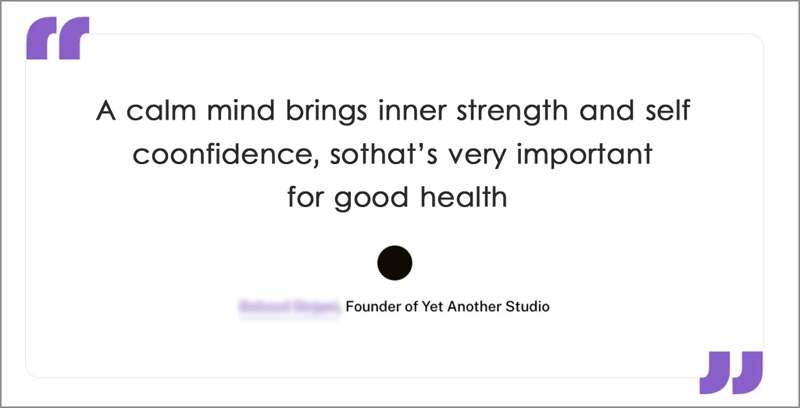
Being featured as an expert or sharing insights on a particular topic within your industry is an integral part of this strategy. Each article that spotlights your expertise will typically provide a backlink to your profile, enterprise, or both. Additionally, if the content garners a prime spot in the SERPs, you will benefit from the site’s promotional channels and consistent visibility. How does it work?
1. Identify an article that can be enriched with your expertise or propose a fresh topic to a relevant website.
2. Contribute your insights or comments, ensuring credit is attributed to you.
3. Once approved, the piece gets published and is actively promoted through the host website’s channels.
For SaaS marketers, this strategy not only promotes mutual growth but also sets a precedent for innovative SaaS brands. By leveraging this method, you can collaborate with notable experts from companies like G2, Slack, Help Scout, Holded, and Maze.
Challenges in SaaS Link Building
Link building is arguably the most time-consuming facet of SEO. With a plethora of SaaS professionals vying for valuable backlinks to edge out competitors, the battle becomes increasingly intense as everyone is pursuing the same objective. Prior to embarking on a link-building endeavor, it’s imperative to acquaint oneself with potential hurdles:
High-Quality Content
Elevating your site’s ranking necessitates crafting top-notch content that other platforms would be inclined to reference. Producing compelling and valuable content is not just crucial for garnering backlinks but also for ensuring your site’s discoverability. Apart from executing link-building outreach campaigns, regularly populating your blog with insightful articles is pivotal to retaining audience interest.
Prospects
The ease of identifying potential clients can vary considerably based on your business model. Different industries present unique landscapes characterized by competitive dynamics, revenue potential, and link-building prospects. Prospecting, the initial phase of link-building, entails the search for websites or articles conducive to backlink placements. Given your multifaceted expertise—encompassing link-building, website optimization, and email campaigns—you have a rich repository of insights to offer, enhancing your appeal for backlinking.
Nevertheless, the fierce competition renders the domain both challenging and rewarding. Consider, for instance, if you operate a software enterprise catering to coworking space management. While coworking spaces have gained traction, their adoption rate remains limited. In such a scenario, your options for unearthing quality content conducive to link-building might be restricted.
Link Pitches
One common challenge many thriving websites face is receiving ill-conceived link requests. The term “link pitch” often conjures images of poorly crafted messages. Such messages often begin with generic salutations like “Dear sir/madam” and continue with clumsy language sprinkled with buzzwords like “inexpensive”, “do-follow”, or “high domain rating”. Needless to say, this approach falls flat.
These pitches typically revolve around monetary requests or solicitations for guest post placements, even if your website doesn’t entertain guest contributions. The essence of an effective link pitch lies in its authenticity. Approach with genuine intent, speak in a relatable manner and tailor your pitch to each unique prospect.
Dedicated Manual Work
The process of link building can be broken down into a series of steps, commonly referred to as a link building campaign:
- Prospecting- Identifying potential opportunities for link placements.
- Preparing an Outreach Strategy- Planning the approach for each prospect.
- Acquiring Contact Information- Gathering details for effective communication.
- Crafting Personalized Pitches- Tailoring your message to resonate with each prospect.
Statistically speaking, only about 10% of link building outreach emails get a response. And of those, roughly half are positive. Successful link building demands consistent effort over time. A dedicated individual can potentially secure approximately 10 backlinks per week. If resources permit, consider delegating the task of link building to a dedicated professional or agency.
Results Take Time
Initiating and maintaining a link building campaign is time-consuming. Moreover, the fruits of these labor-intensive efforts might not be evident in your website’s search engine rankings until after a few months of consistently procuring high-quality links. The time frame for observing tangible results varies, but one thing is certain: a week of link building won’t catapult you to the top of search results.
Cultivating a robust link profile is a sustained commitment, which, while demanding, eventually yields significant dividends. Once you’ve established a solid backlink foundation, it creates a competitive barrier, making it challenging for rivals to outpace you in search engine rankings without an equally robust link strategy.
Wrapping Up
When charting a course for your business’s link-building endeavors, it’s essential to keep a few principles at the forefront. It’s not just about the sheer number of backlinks; the quality of these links and your site’s internal linking structure plays a pivotal role in determining your domain authority. Furthermore, SaaS link building is inherently a long-term commitment.
Finding the right strategy might require some trial and error. If this seems daunting in terms of time and effort, there are specialized SEO agencies that cater to SaaS businesses. Partnering with them can streamline your efforts, connecting you with relevant website owners without the heavy lifting.
FAQs
What is the best strategy for SaaS link building?
There’s no one-size-fits-all answer, but successful strategies often encompass guest posting, product embeds, podcasting, ranking reports, product reviews, and leveraging free tools.
What Are the Key Elements of a Successful SaaS Link Building Strategy?
A successful strategy includes thorough research, quality content creation, effective outreach, and continuous monitoring and adjustment.
What are the challenges in SaaS link building?
Link building demands patience and significant manual effort. Immediate results are rare, and initially, pinpointing the right prospects within your niche can be challenging.
How Do I Measure the Success of SaaS Link Building Campaigns?
Success can be measured by tracking metrics like increased organic traffic, improved search rankings, higher domain authority, and the number of acquired backlinks.
